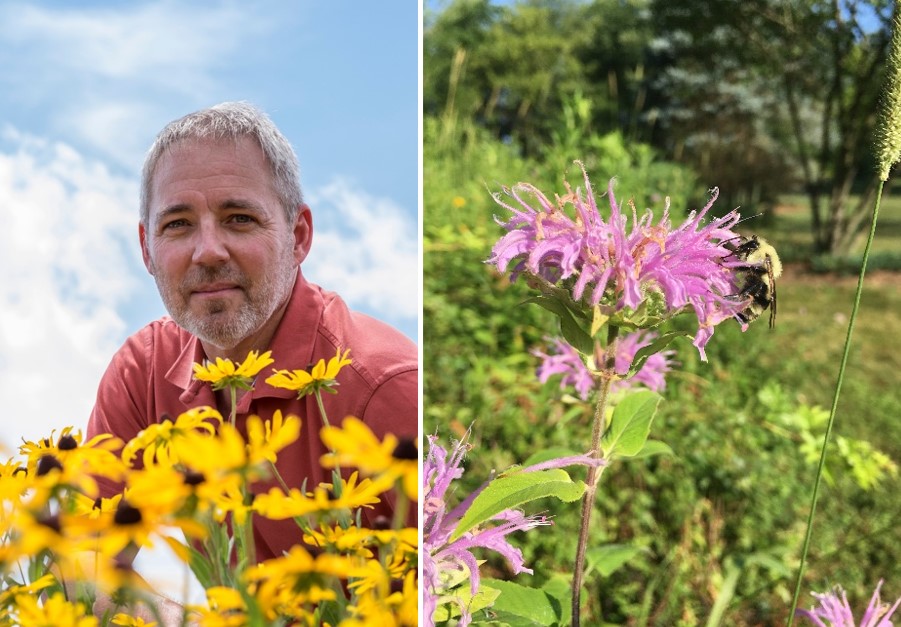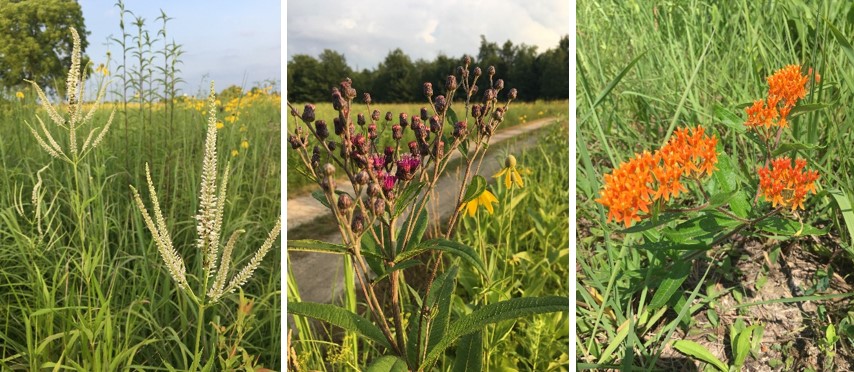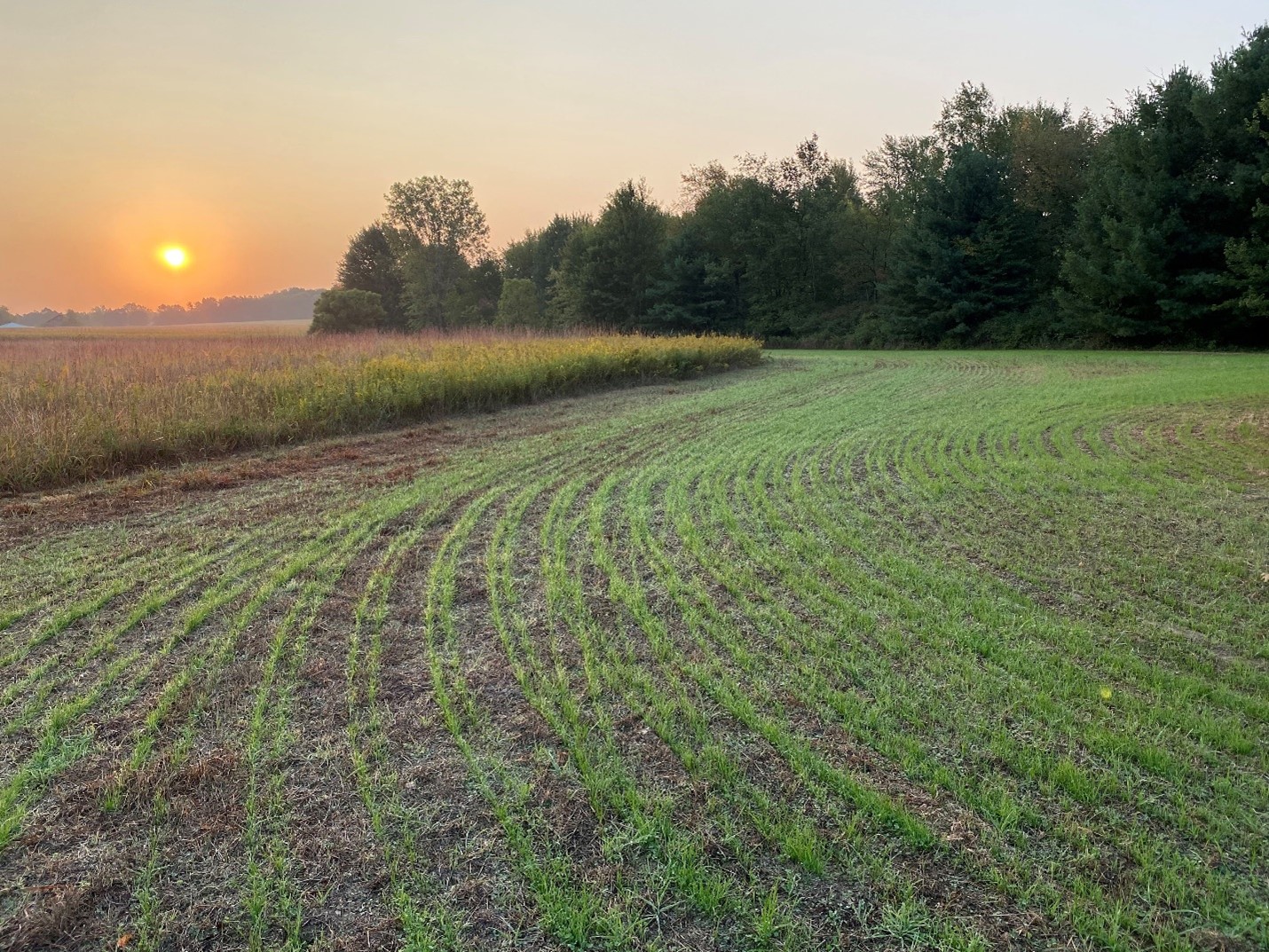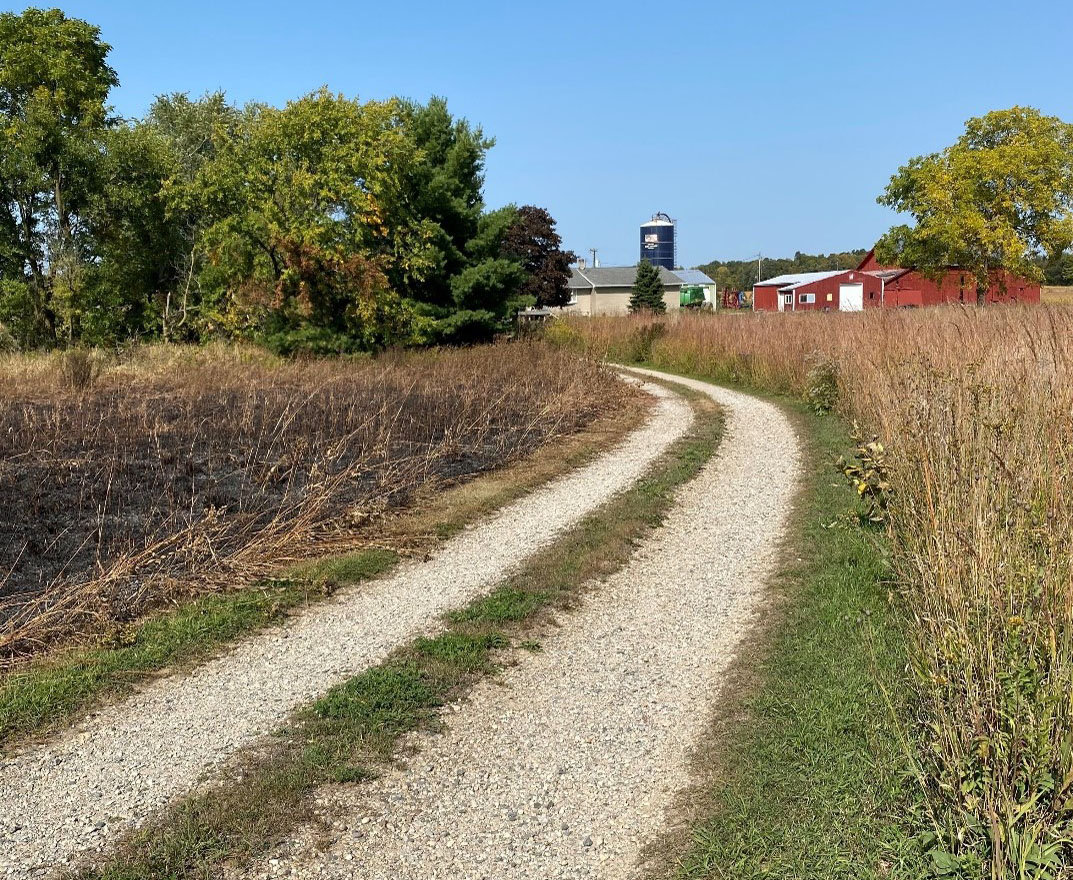Pocket of paradise: A second case study of establishing large-scale prairie planting
Creating a habitat to support biodiversity and ecological restoration in mid-Michigan.

Land stewards seeking to manage property in a sustainable way often wish to support pollinators as a first step toward biodiversity and habitat renewal. Planting habitat with intent to nurture foraging bees can be a great way to support local populations and build a lasting legacy for pollinators, songbirds and other animals on your property.
Whether the space is large or small, pollinators can be encouraged to thrive by engaging in a few sustainable techniques. Observing the site to determine which species of plants will grow well, removal of unwanted species and selecting a palette of flowering plants to provide nectar and pollen the entire season is paramount. Preparing the site using the least disruption possible and creating a vision for long-term sustainability will ensure a successful venture with lasting impacts. There are many ways to establish pollinator habitat, and this case study provides one example that may be of interest to land managers who are interested establishing pollinator habitat.
Background
Doug Landis is a professor in the Department of Entomology at Michigan State University with a background in ecology, conservation and management of insects in the landscape. His interest in natural history and biodiversity inspired him to take his passion off campus and into his own backyard through the establishment of a prairie planting. The planting sits on 20 acres with sections that were previously farmed, as well as a wetland and beech-maple forest.
The prairie planting was established on the section that was previously farmed, and it has become an ever-changing landscape. With dynamics all their own, plant species fade in and out due to changes in management, time, environment and competition. This “hobby” planting and inspiring personal project for Landis has taken clear goals as well as time, commitment and maintenance to sustain.

Goals
Much of Landis’ background as an ecologist and entomologist is reflected in the overarching goal of Landis’ planting, which is to provide wildlife habitat and support biodiversity. This goal went beyond just a pollinator or beneficial insect habitat. The intention was to create a “pocket” habitat for other creatures as well, such as birds, turtles, small rodents, deer and more.
Another key intention was ecological restoration. Landis carefully selected plant species that mirrored what a historical prairie would have looked like in Ingham County (circa the turn of the 19th century). This intentional selection meant much background research.
First was site research, which included looking at historical aerial photos of the site and referring to the USDA Soil Survey to see which soil types were present at the site. Using this information, Landis was then able to separate the site into four zones representing known prairie types. Brookston loam was the largest soil type. This area was planted as a mesic or dry-mesic prairie depending on topography and surface water. Owosso-Marlette sandy loam was the second largest soil type and was planted as a dry prairie. Marlette-fine sandy loam was the third largest soil type and was planted as a wet-mesic prairie. Finally, there was Houghton muck, which was not planted at all because of the presence of tough invasive species. He then used the Michigan Natural Featured Inventory natural communities data and “Field Manual of Michigan Flora” by Voss and Reznicek to help guide the plant species selection for these zones.
Landis received funding from the USDA Conservation Reserve Program (CRP) to fuel his project. The CRP works with farmers to re-establish valuable land cover, helping to improve water quality, prevent soil erosion, and reduce loss of wildlife habitat. There were clear elements in Landis’ plan that enhanced support for wildlife right off the bat. One element that made his application more competitive was a surrounding alfalfa planting that serves a dual purpose as a burn break and as forage for wildlife. It took about six months to get the application approved, and the award included a 10-year contract. The terms of the contract included planting a sufficiently diverse mixture of plants, performing mid-term management, and agreeing to standard restrictions on mowing and grazing.
In return for removing land from agriculture and planting species that will improve environmental health, Landis received cost sharing for establishment and a yearly rental payment for the land. Landis said that payments from the CRP gave him a leg up, especially with the high cost of seed. The final seed assortment included two grocery-sized bags of forbs and about 25 pounds of grass seed, which cost more than his first car (a used Toyota Corolla purchased in 1979).
Site selection
Landis did some background research before deciding on the site by looking at aerial photos of the site from the 1930s. Studying the history, he saw that it was agriculture land, but it also had elements that would support this type of planting such as open land, wetlands and maple-beech forest. After a few years of discussion, he purchased the 20 acres.
Before the prairie was planted, Landis had to stabilize the wetland. It took Landis about three years to plan and prepare the entire site because of this important initial effort to protect the land. The wetland is spring fed, but it frequently dried out in the summer due to an old drain tile. After consulting with the Michigan Department of Fish and Wildlife, a water control structure was installed to stabilize the water level and prevent the wetland from drying out.
Planting
Invasive plants are often the biggest challenge to a new restoration establishment. Reed canary grass was the main invasive at the site and was concentrated around the wetland zone where there was Houghton muck. To manage this area, it was set apart and is being managed via prescribed burning.
The planting site was actively being farmed just a year before planting. Landis used the strategy of planting Round Up Ready soy in this area and then treating with an herbicide to manage the weed species that were there. When dealing with a large piece of land, herbicides can help reduce existing weeds so that the desired plants are able to establish in the following year. In the method Landis used, the herbicides target the unwanted weeds and tenacious invasives, but not the soy. After being planted in Round Up Ready soy, the seed bed has fewer weeds.
The following planting year, Landis was still battling many annual weeds. He managed these weeds by depleting the soil seed bank through cultivation. The site was cultivated three times (shallow, 0.5 inch) starting in May and every three weeks until seeding in June. No soil amendments or fertilizers were added, but Landis did use a cultipacker to roll the seeds in after planting. The dimples on the roller created space for the seeds to settle in at the site and create successful seed to soil contact.
Plant selection
Landis selected plant species that were historically part of an Ingham County prairie based on the soil type and prairie type. He decided on 10 grass species, 78 forb species, 12 shrub species and one tree species (bur oak).
After planting and plant emergence, the site was mowed three times during the first year down to 4 to 6 inches. In the second year, it was mowed twice. It started to come into fruition in the third year, but Landis noted that the prairie is always changing. Black-eyed Susan was one of the first plants to show up, while others such as big bluestem took more time to establish. Even later were species such as spiderwort (seven years to show up), false boneset and blue-eyed grass. Some others were outcompeted, such as spotted horsemint. Landis thought the reason spotted horsemint didn’t thrive may have been because it does better in very dry, sandy conditions and was outcompeted by the wet loving species.
Walking the prairie is one of the management strategies Landis uses to see how the system and the species change—and to keep an eye out for unwanted plants such as autumn olive, honeysuckle, sweetclovers, and Canada thistle.

Long-term maintenance
Landis uses prescribed burns to maintain the planting. These burns began in the third year of the planting, and he burns about every three years. Landis took classes in prescribed burning, but for the first few years he had a professional come out to the site so he could watch and become more familiar with the process. Safety is a very important piece to prescribed burns. The right “prescription” is needed, which means conditions to burn must be right in terms of wind speed and direction. Approval from the local fire department is also required. Other important considerations are smoke management and burn breaks. As mentioned above, Landis uses an alfalfa planting as his burn break around the planting to help keep the burn contained.


Summary
Landis commented, “Having these smaller plantings that serve as a habitat can be important.” This planting serves as a pocket for more than just pollinators—Landis has spotted pheasants, quail, box turtles, Blandings turtles and even a bald eagle at the site. Realistic expectations and patience were important pieces to the planting puzzle as well. It took about three years to establish and takes consistent maintenance and commitment, but for Landis, it is certainly worthwhile.
Bees and beneficial insects comprise the world’s hardest-working workforce. With over 450 species of bees in Michigan, creating a diverse habitat that helps them thrive and will have far-reaching impacts on our state.
Other articles in series
- USDA funds available to establish pollinator habitat on your land
- Somewhere for the pollinators to go: A case study of establishing large-scale pollinator habitat
- A refuge for pollinators: A case study of establishing large-scale pollinator habitat on marginal farmland using federal funds



 Print
Print Email
Email
